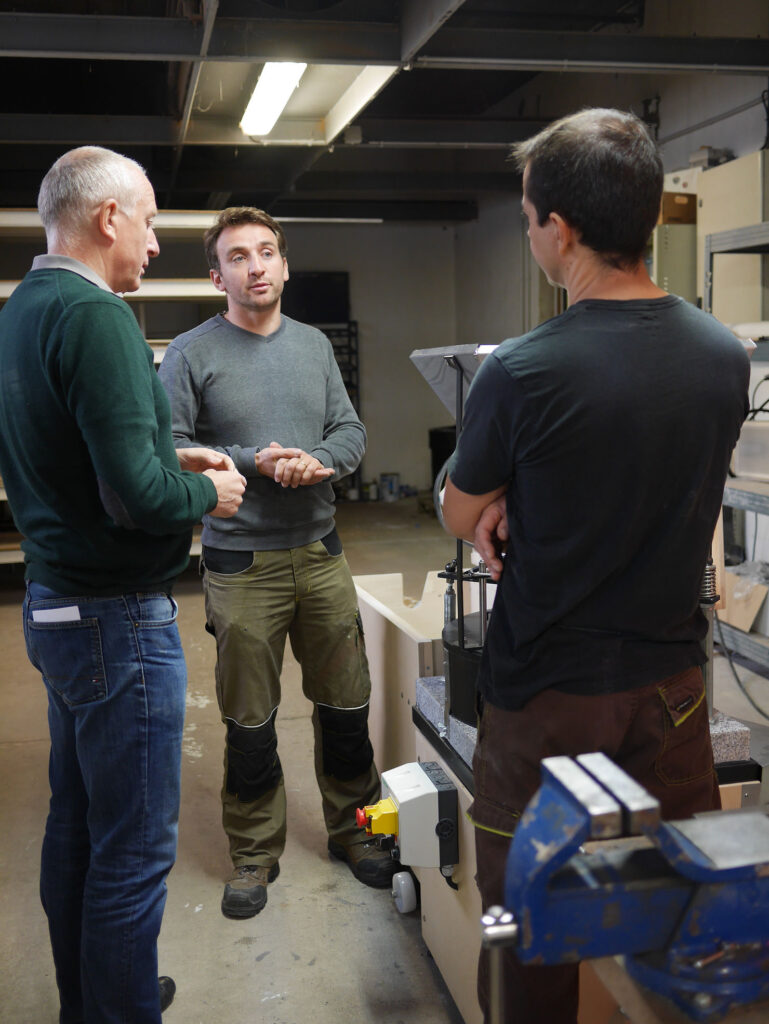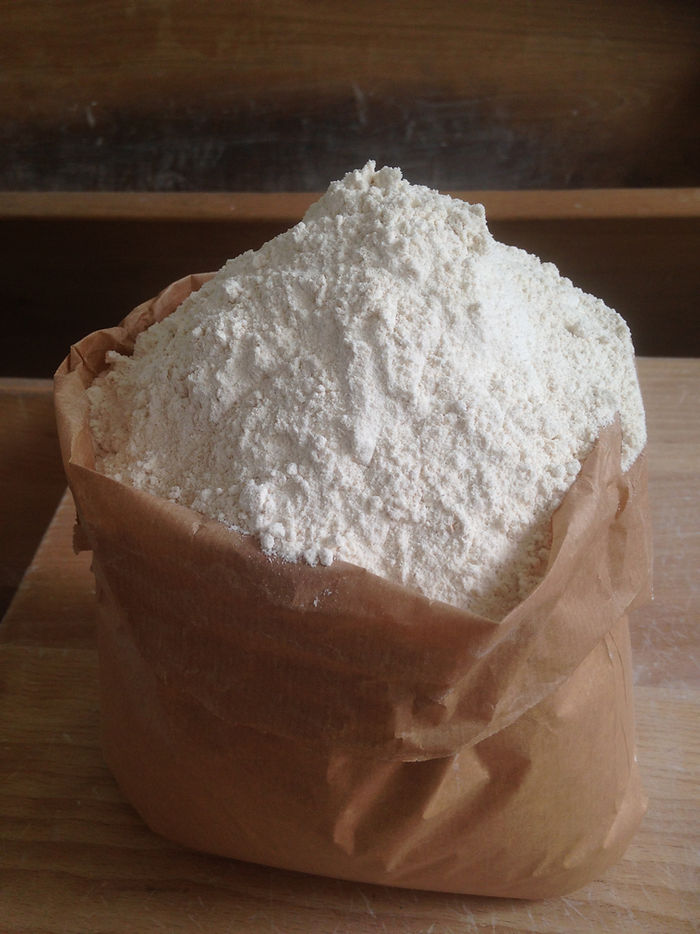What is an Astrié mill?
Few people know that the invention of the Moulin Astrié owes its name to the Astrié brothers.
Unlike cylinder mills, the seed is not crushed but actually rolled between the millstones. One of the millstones is in motion, while the other is called ‘dormant’.
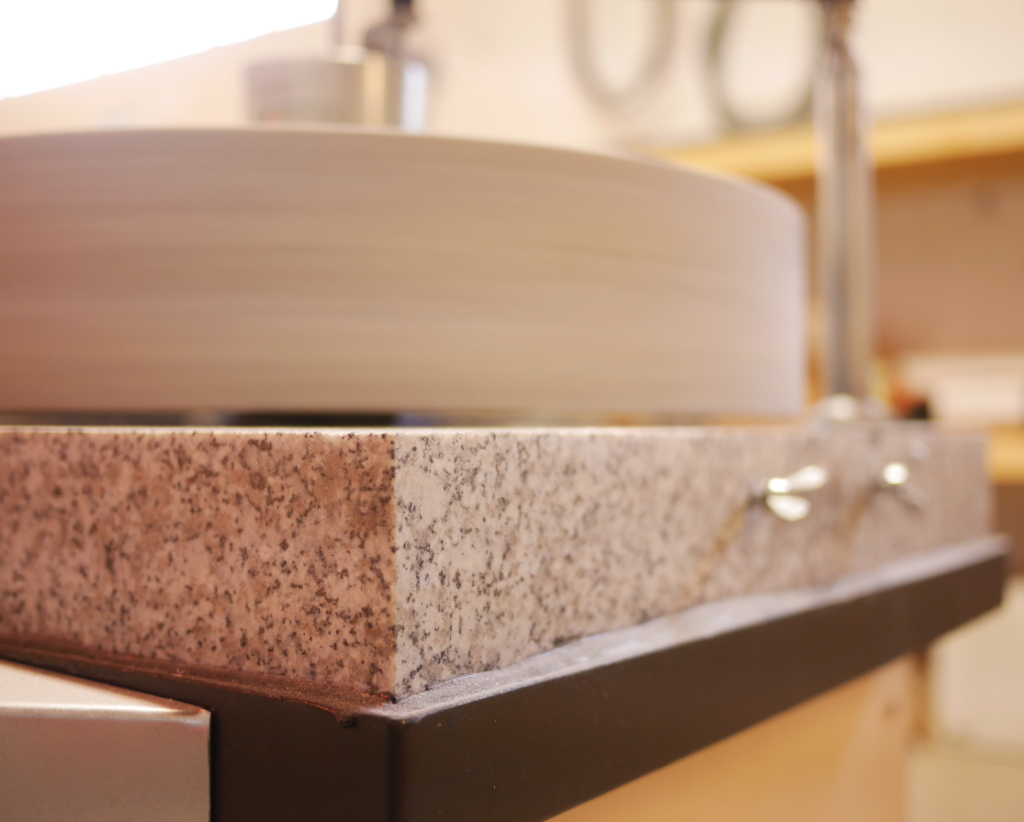
Unlike more traditional stone mills, it is not the weight of the upper wheel that crushes the grain, but a system of springs and micrometric adjustment between the wheels that ensure the grain is unrolled.
This ‘unwinding’ allows you to :
- preserve all the qualities of the seed germ,
- achieve an extraction rate of over 80% in a single pass.
If you want to know all about the stone mill in 8 key points, follow this article.
Why make gluten-free flour with a stone mill?
The Astrié mill we manufacture preserves all the nutritional qualities of the cereal. You should choose this stone mill if you want to produce flour:
- higher quality
- more nutritional
- natural
- with greater added value
- for an unrivalled taste
It’s worth making gluten-free flour if you want to meet the requirements of customers who are intolerant or allergic to gluten. What’s more, gluten-free is also a new way of eating, which can sometimes help you reach new customers.
Making gluten-free flour in a stone mill gives you all the benefits of highly nutritious, natural, easily digestible and gluten-free flour.
Gluten isn’t bad in itself if it’s combined with other nutritional values of the cereal, but sometimes our gluten-intolerant customers realise that by simply using flour milled with an Astrié mill, they digest the finished processed products perfectly well. So it’s important to take stock of your customers’ expectations and what you want to do with this “gluten-free” flour.
How do I make gluten-free flour with the Astrié stone mill?
Gluten-free regulations are strict, and the health of your consumers is at stake. So there are two situations to consider:
- you only want to make gluten-free flour
- you want to make gluten-free flour AND a traditional flour
In both cases, our advice is different! Follow the guide!
Situation 1: you only want to make ‘gluten-free’ flour
If you’re thinking of making only gluten-free flour, it’s perfectly possible to do just that with a single Astréïa wholemeal mill. The Astréïa mill includes :
- the mill (stone millstones made of Granit du Sidobre + the hopper + the adjustment system)
- the bluttery (the casing + the sieve in which the flour is placed when it leaves the mill)
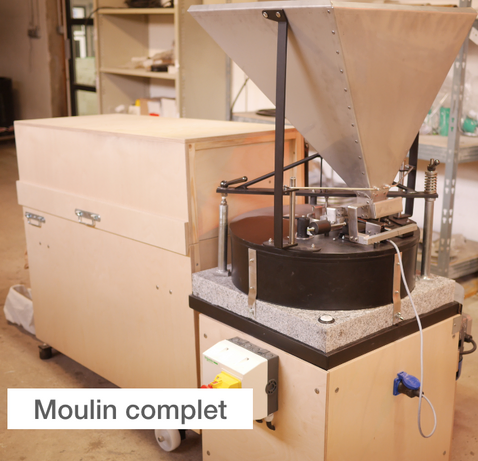
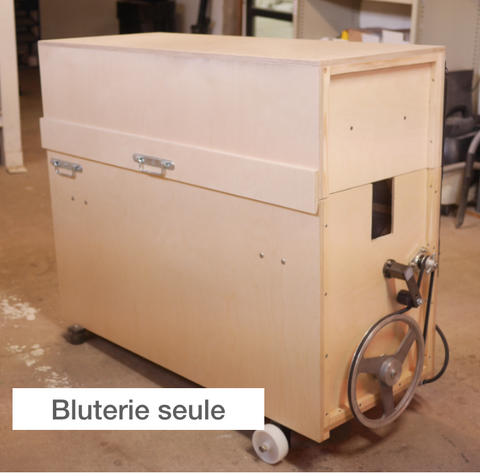

The mill, millstones, sieve and sifting machine will be dedicated to the professional production of gluten-free flour.
Situation 2: you want to make ‘gluten-free’ flour + a traditional flour
If you’re thinking of going gluten-free AND continuing to produce more traditional flour at the same time, we recommend two equipment alternatives to suit your time and budget. On our Astréïa model, the mill can be disconnected from the sieving machine. This is an important feature when making two different flours. Let’s have a look at why!
If you have limited time available:
In that case, we advise you to invest in two stone mills.
- the first stone mill produces gluten-free flour
- the second stone mill produces the more traditional flour
In this case, as many of our customers do, the stone mill used to produce gluten-free flour is ideally located in a dedicated room so that your flour never comes into contact with other products containing gluten.

If your budget is tighter :
In this case, we advise you to invest in a complete mill and buy an additional sieving mill.
Your investment is therefore lower at the start of the project. In this alternative, it will be important to organise tasks and flour production upstream.

A single mill, 2 bluteries: how will it work on a day-to-day basis?
Your Astréïa mill can be easily disconnected from the blast furnace.
So make a reservation:
- one sifting mill for the production of gluten-free flour
- the second sifting mill for the production of more traditional flour
The mill will then do the work for both productions. You disconnect it from the sifting mill, clean it thoroughly and easily with water and then connect it to the second sifting mill. And you do this every time you switch from one flour production to the other.
In this case, the gluten-free flour mill is ideally located in a dedicated room, so that your flour never comes into contact with other gluten-containing products. It is then the mill that goes back and forth between the gluten-free room and the room where conventional flour is produced.
Depending on your premises, we can advise you on the ideal layout for switching from gluten-free flour production to more traditional flour, while saving as much time as possible.
Washing the mill simply has to be done with water. It is therefore important to plan the layout so that you are as comfortable as possible, while ensuring that your flour production is perfectly safe for your customers.

Who is Astréïa?
Astréïa is a manufacturer of stone flour mills. We are located in the Ain region (01) and our customers are mostly cereal growers, farmer-bakers and bakers. We tell you the story of Astréïa here.
Looking for an Astrié mill for sale?
We have written an article on this subject to guide you in your choice by asking you the most important questions. Article ‘Moulin Astrié for sale’.


